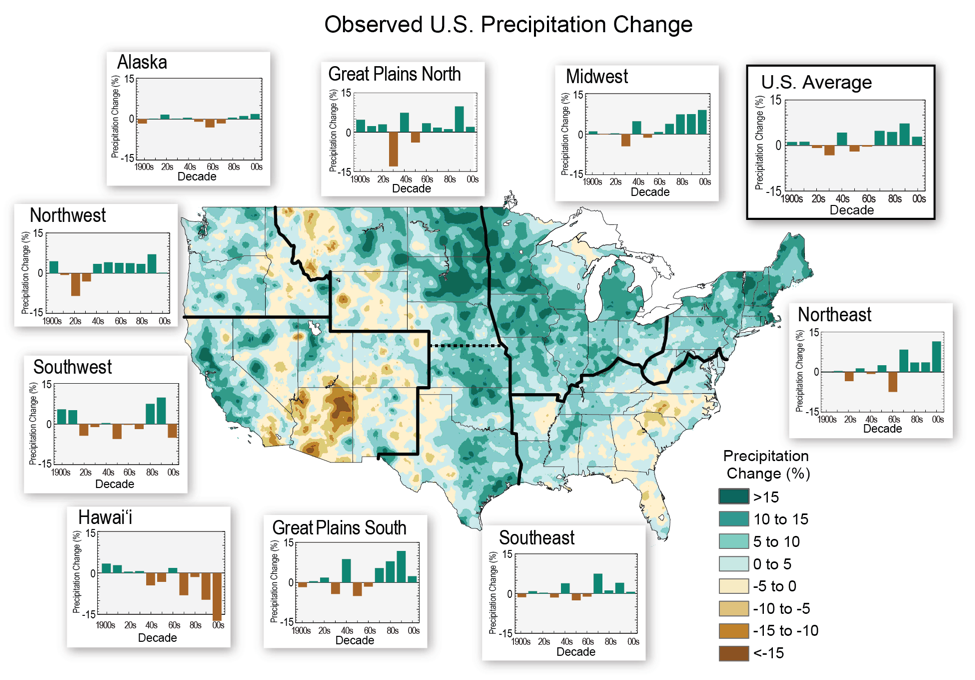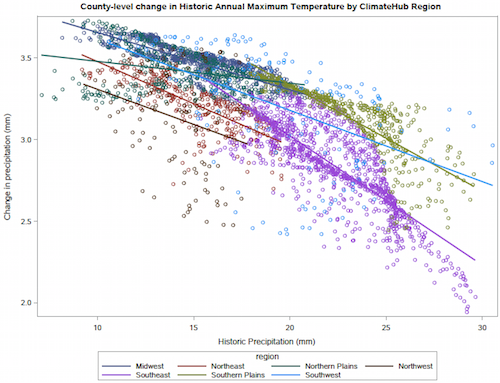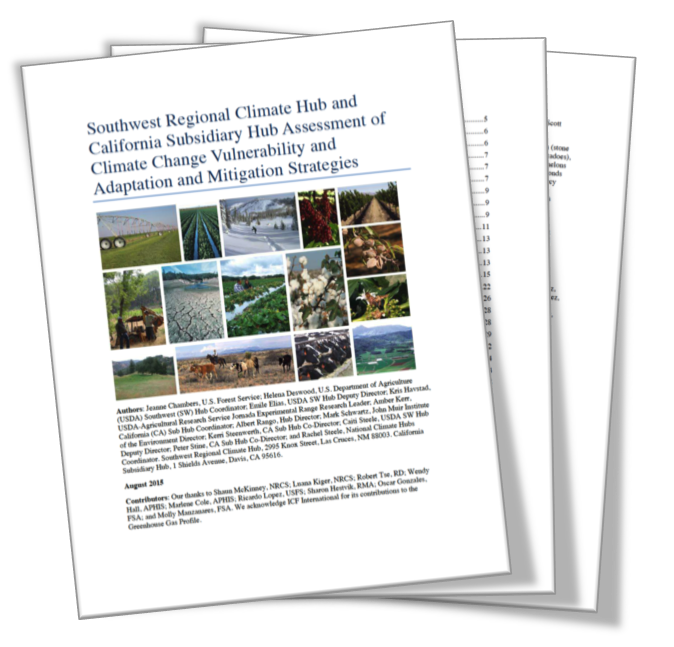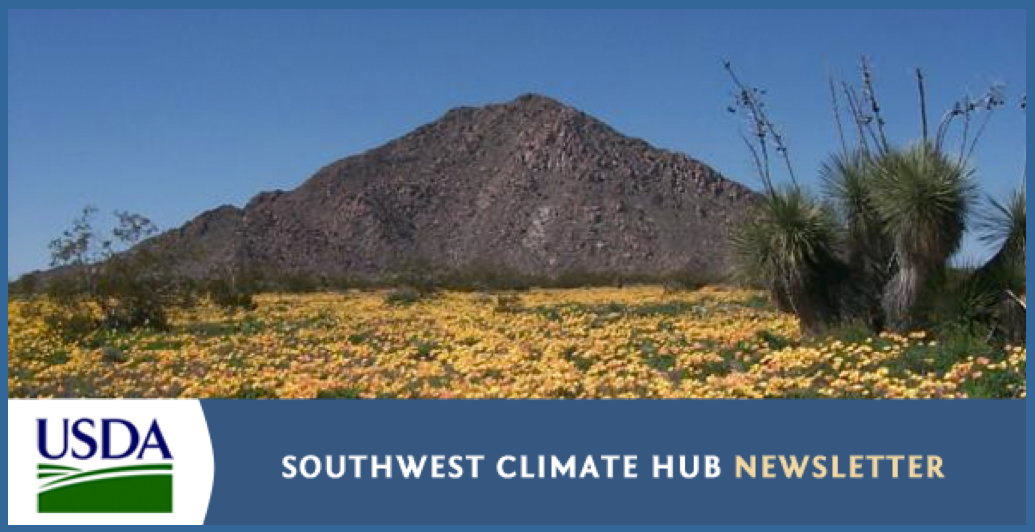- Data
- Videos
-
Publications & Research
-
Education
- Water Conservation Data Jam - Curriculum for 6th-12th Grade Students
- Climate Change and Wildfire – Curriculum Unit for 9-12 Grade Students
- Climate Change and the Carbon Cycle – Curriculum Unit for 9-12 Grade Students
- Where's Our Water? Water Conservation in the Southwest - Lesson for 6-8 Grade Students
- Climate Change and the Water Cycle - 10-Hour Curriculum Unit for 6-12 Grade Students
- The Effects of Climate Change on Agricultural Systems - 5-Hour Curriculum Unit for 6-12 Grade Students
- Cambio climatico y el ciclo del agua
- Webinars and Online Courses
- Websites
- News & Events
- About Us
- RMA
Southwest Indian Agriculture Association
We were asked to present on the subject of Climate Change at the 2016 Southwest Indian Agricultural Association Livestock Field Days held at the Apache Gold Casino Resort in San Carlos, AZ on April 12th and 13th. In our presentation, we reviewed recent and future climate changes and how these affect agriculture in Arizona. One of the topics that the audience found most interesting was the recent and projected changes in precipitation. Several people commented on how it seems that the monsoon is coming later and not delivering so much rain in June and July. The science supports their observations. While Arizona has a bimodal annual rainfall distribution, it is the North American Monsoon that delivers most of the annual precipitation over the State. Over the last twenty years (1991 – 2012), Arizona has been getting drier, compared to the period between 1900 and 1960. But there has been an increase in the amount of precipitation falling in short-lived, very heavy events.

Image from the 2014 National Climate Assessment (http://nca2014.globalchange.gov/report/our-changing-climate/precipitation-change#intro-section-2)
Climate models show that in the long term, we can expect the downward trend in precipitation to continue with lower annual totals in precipitation in the Southwest over the next century. There has been little research on how the monsoon will change in the future, but it is thought that the monsoon will start later and there will be less precipitation in June and July and more precipitation in September and October.










